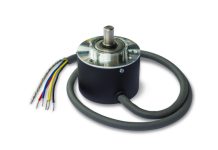Today, vision monitoring is playing a vital role in stopping the spread of Covid-19 disease. Both inside and outside offices, vision inspection is ensuring people are keeping social distances. For decades, visual inspection has been an important aspect for industrial processes. Whether it is used for assisting in sorting bulk materials in pharmaceutical processing, inspecting the quality of produce in food manufacturing or informing the positioning of a delta robot in packaging, machine vision significantly increases the efficiency and productivity of various industrial processes.
Vision Deployment Options
Until recently, vision systems contained a dedicated controller or a computer to process vision algorithm. The need for additional controller limited vision integration as it required in-house trained officials to manage vision controllers and systems. In addition, configuration and programming environment required different skills to what usually is available for manufacturing industry markets. Accordingly, plants and production sites have been reluctant to integrate machine vision not-withstanding tremendous benefits that it offers.
Systems within a large production line
A complete production line imports raw materials and manufacture own-branded products. There are numerous sections that are involved to assist manufacturers with producing their goods. Each system plays its own unique part and runs independently. In order to integrate machine vision, there is usually a requirement to install a dedicated vision controller for each section. For instance, a food processing plant might need one vision inspection system for raw material sorting, another for raw material defect identification, and another machine vision equipped robotic system for packaging.
Further difficulties are usually experienced when vision data is required to be integrated with automation data for motion control, safety logic or reporting faults. As both vision and automation are separate controller, data generation, compatibility and sharing becomes ever so difficult especially when advanced vision programming skills are found to be lacking within the maintenance teams at any production line.
Machine vision controller
Ideally, it would be beneficial to choose PLC system that offers vision hardware. For instance, Beckhoff has recently launched TwinCAT Vision. This means PLC, SCADA, HMI, Motion Control as well as vision are all integrated as one package. Operators who understand PLC programming could easily set up and troubleshoot vision systems.
The other option is to pack the vision data in a format that could be easily read within PLC and SCADA systems. For instance, TCP/IP and Modbus telegrams could be shared between existing PLC and vision systems. When done in this manner, two systems could be configured to operate in a fully decoupled but highly cohesive manner. Maintenance Engineers only need to probe the network telegrams to troubleshoot any issues.
If you need to integrate vision into your existing production line, then contact Easybodge. We offer wide range of options to seamlessly integrate vision into your production line.
















